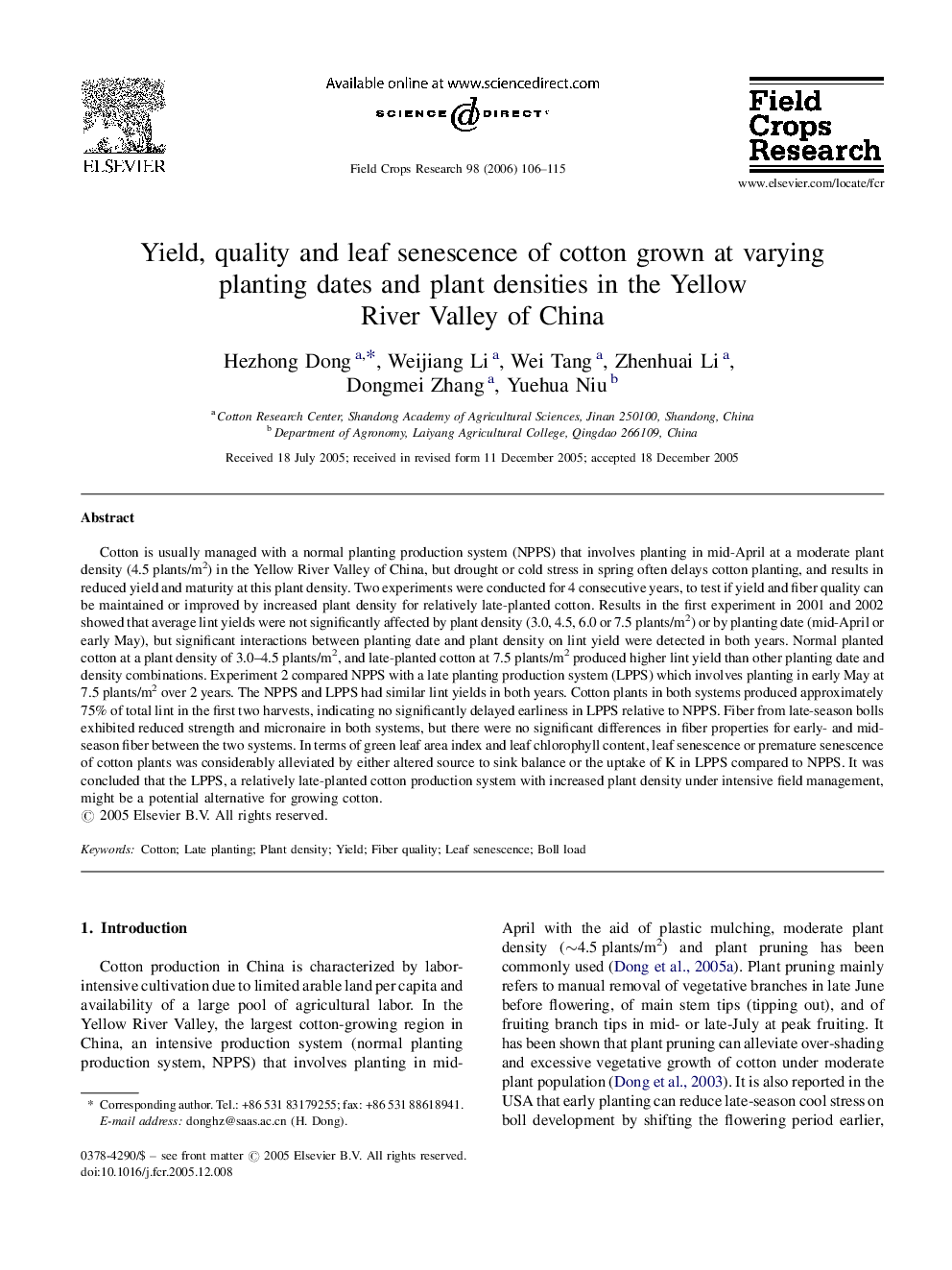| Article ID | Journal | Published Year | Pages | File Type |
|---|---|---|---|---|
| 4511859 | Field Crops Research | 2006 | 10 Pages |
Cotton is usually managed with a normal planting production system (NPPS) that involves planting in mid-April at a moderate plant density (4.5 plants/m2) in the Yellow River Valley of China, but drought or cold stress in spring often delays cotton planting, and results in reduced yield and maturity at this plant density. Two experiments were conducted for 4 consecutive years, to test if yield and fiber quality can be maintained or improved by increased plant density for relatively late-planted cotton. Results in the first experiment in 2001 and 2002 showed that average lint yields were not significantly affected by plant density (3.0, 4.5, 6.0 or 7.5 plants/m2) or by planting date (mid-April or early May), but significant interactions between planting date and plant density on lint yield were detected in both years. Normal planted cotton at a plant density of 3.0–4.5 plants/m2, and late-planted cotton at 7.5 plants/m2 produced higher lint yield than other planting date and density combinations. Experiment 2 compared NPPS with a late planting production system (LPPS) which involves planting in early May at 7.5 plants/m2 over 2 years. The NPPS and LPPS had similar lint yields in both years. Cotton plants in both systems produced approximately 75% of total lint in the first two harvests, indicating no significantly delayed earliness in LPPS relative to NPPS. Fiber from late-season bolls exhibited reduced strength and micronaire in both systems, but there were no significant differences in fiber properties for early- and mid-season fiber between the two systems. In terms of green leaf area index and leaf chlorophyll content, leaf senescence or premature senescence of cotton plants was considerably alleviated by either altered source to sink balance or the uptake of K in LPPS compared to NPPS. It was concluded that the LPPS, a relatively late-planted cotton production system with increased plant density under intensive field management, might be a potential alternative for growing cotton.
